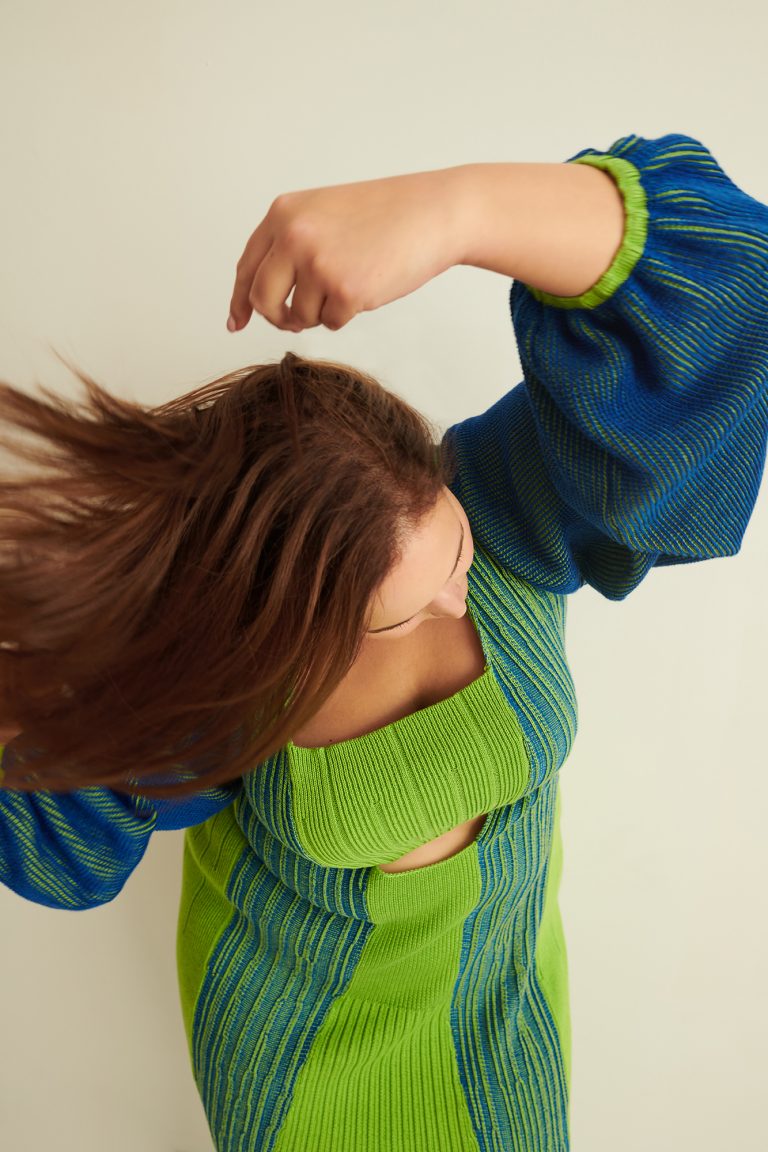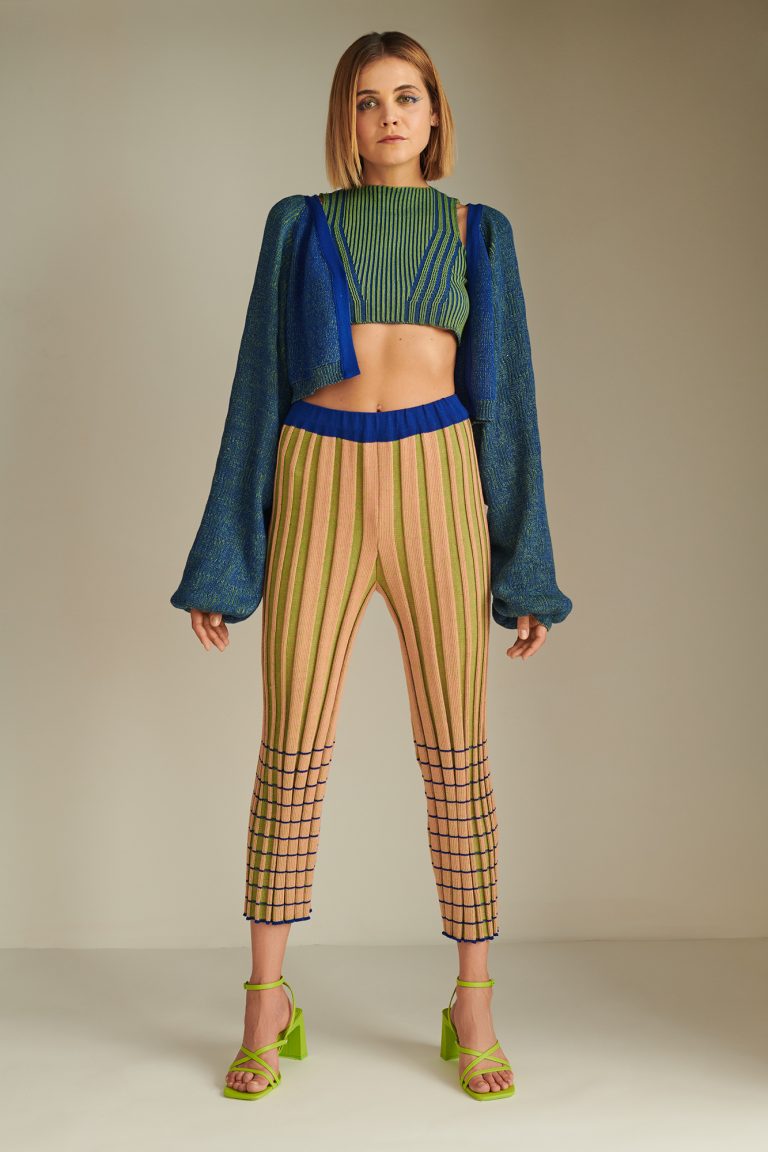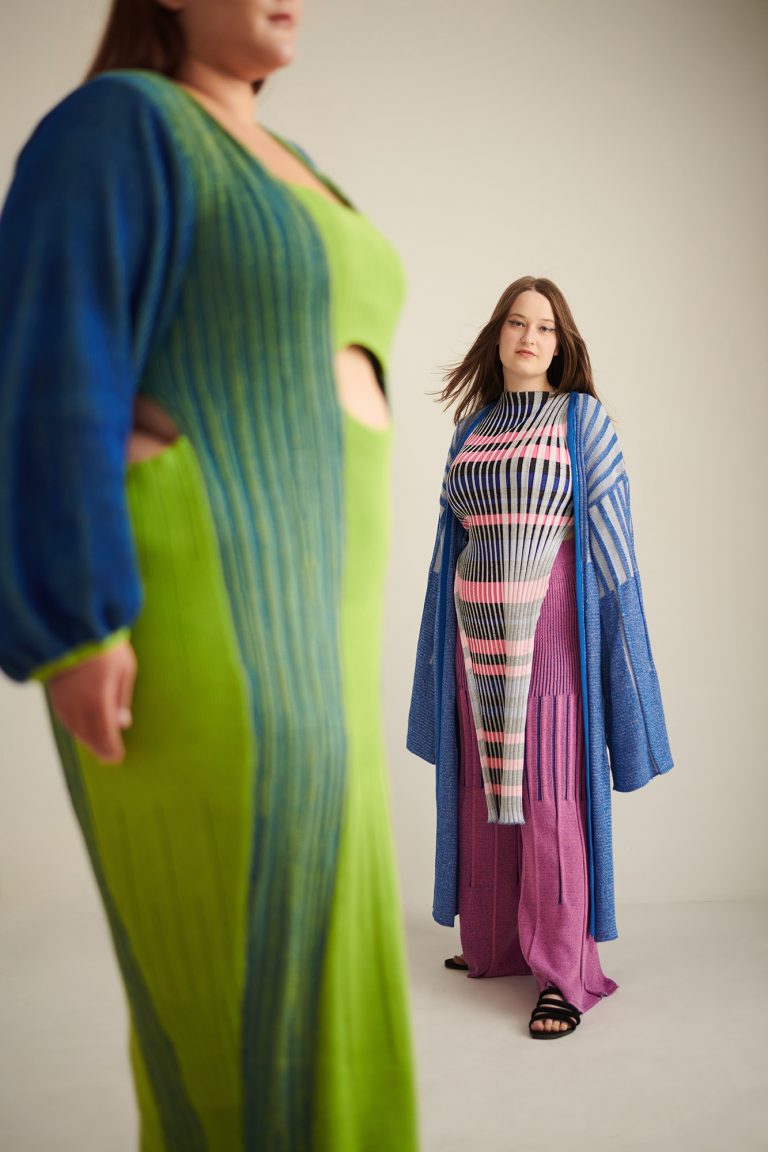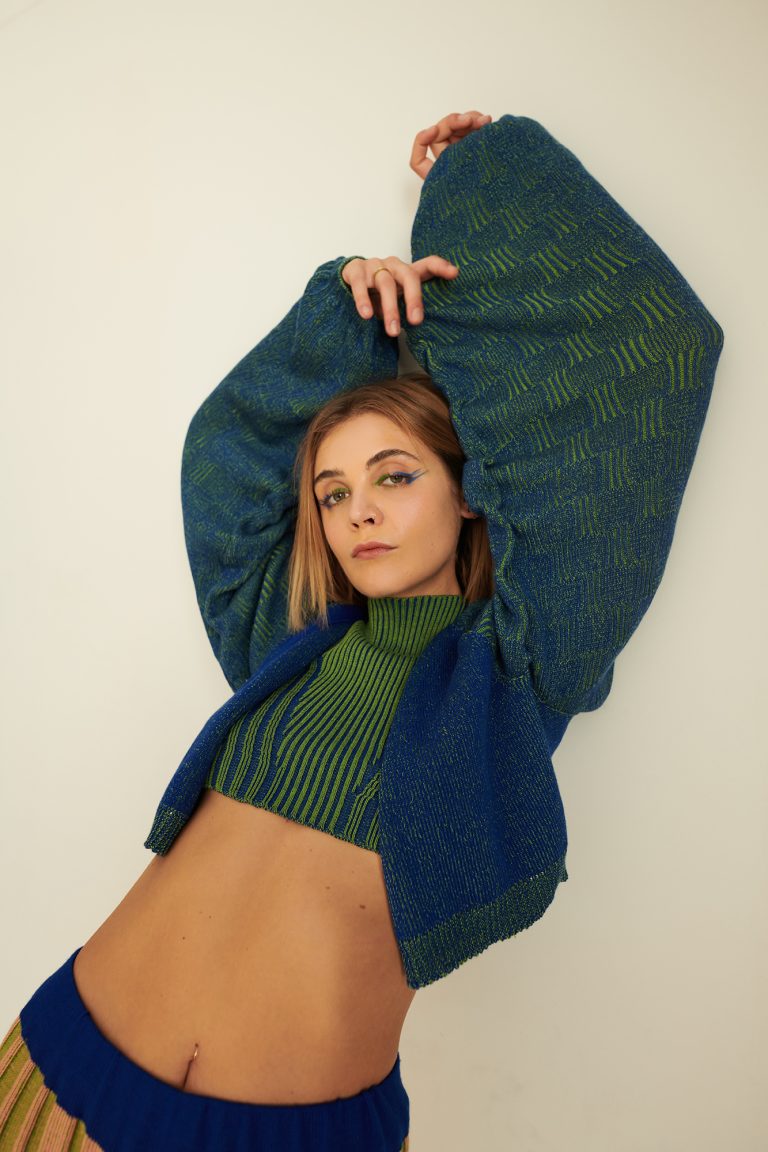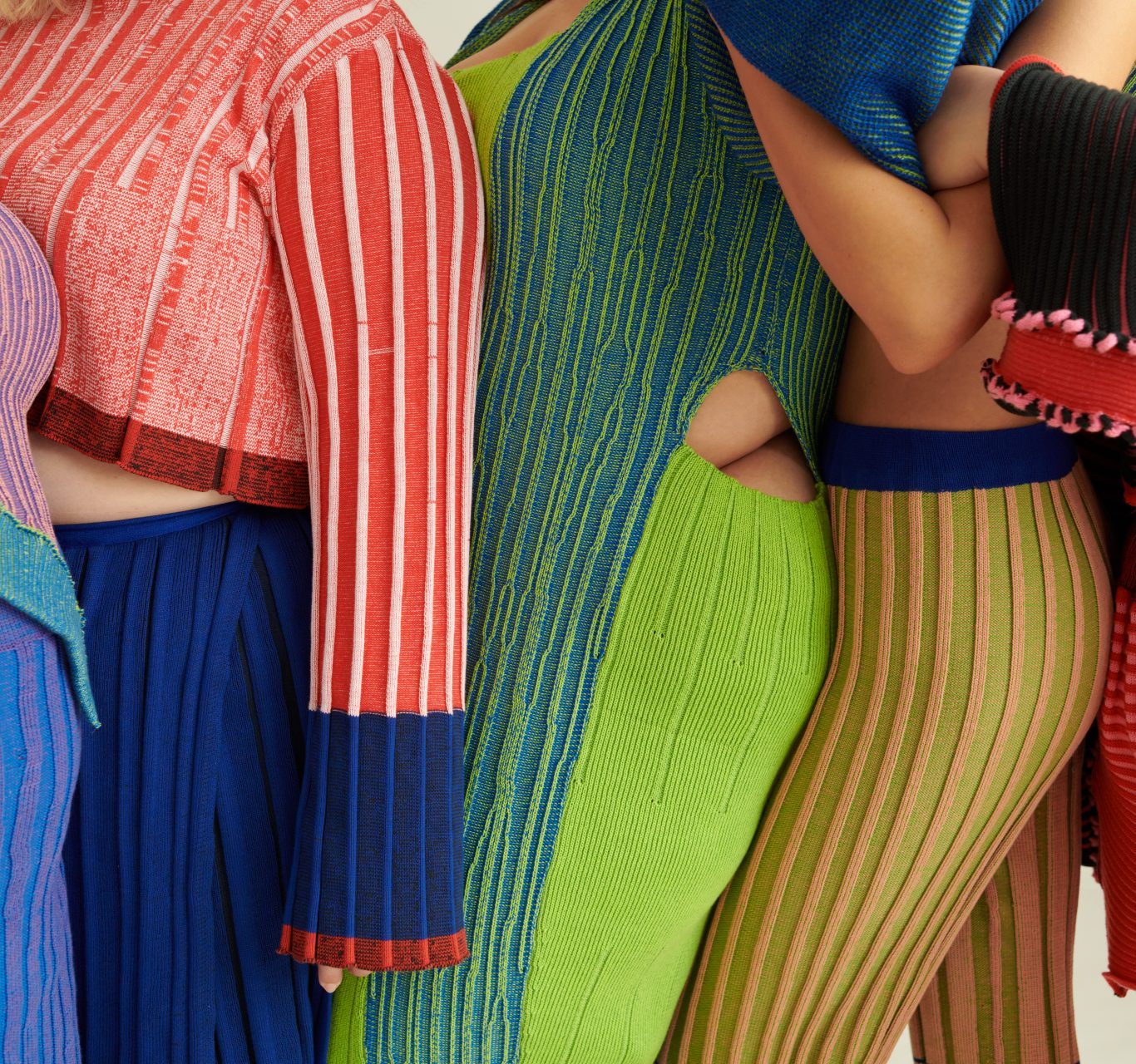
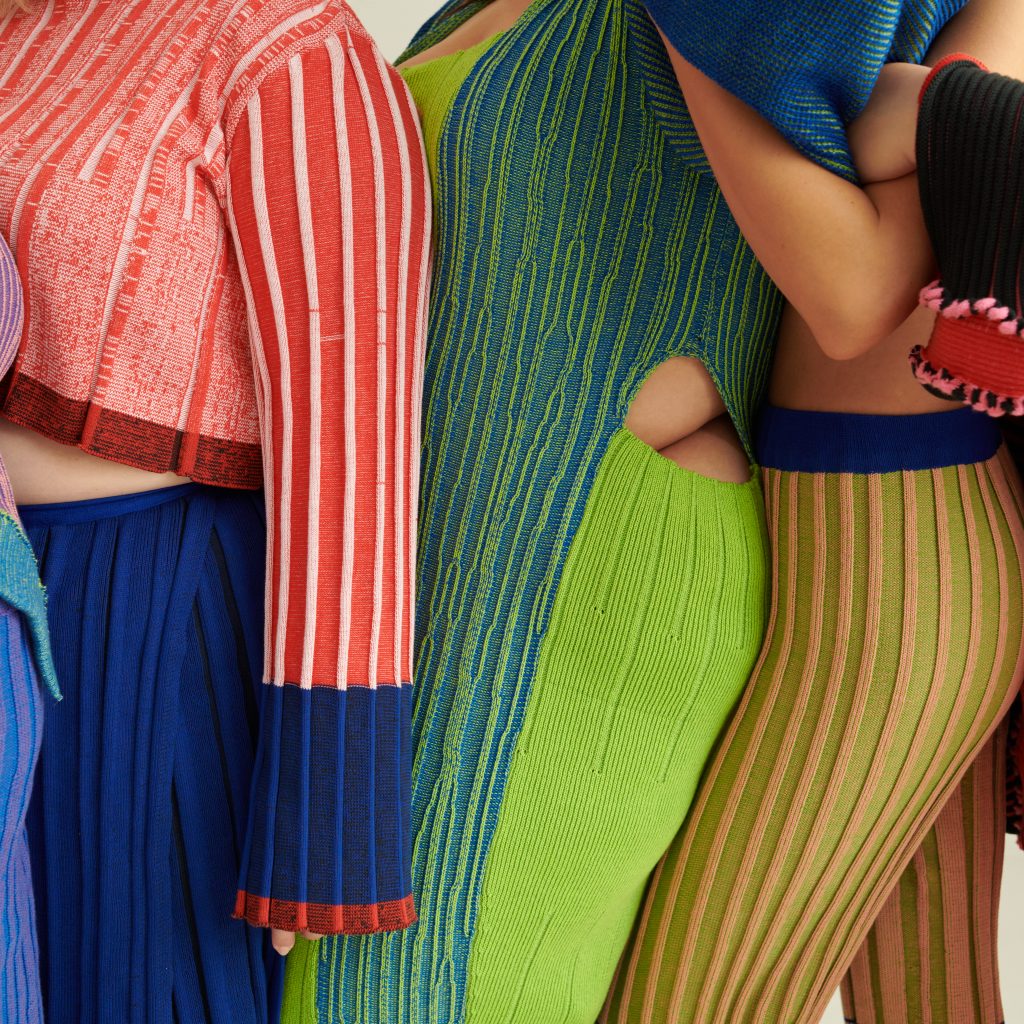
Female bodies, unlabelled – Lili Mészáros’s Shape of All collection
Even for those with no serious body image issues, shopping for clothes may feel like being in a special kind of horror movie. When you see a pile of jeans, all tight at the hips and loose at the waist, in the uniform and unfavourable light of the changing room, it’s difficult to see your body as normal and lovable. The 2010s saw a strong trend of body positivity in social media, and while the resulting dialogue did have some effect on the major actors in the fashion industry, with her collection, Shape of All, Lili Mészáros is addressing the shortcomings of this change.
‘During the pandemic, I saw more body positive posts in social media. This was the first time I heard the idea that our clothes are for us and not vice versa.’
As someone working in fashion, it wasn’t easy for Lili to come to this conclusion, but she felt a certain responsibility to take a critical look at the contemporary female beauty ideal set by the fashion industry. While from time to time there are projects that celebrate the diversity of the female body, the representation of different shapes and skin colours is still in its infancy in Hungary. Of course the male ideal can also be a burden in this stifling atmosphere, but as in society it is traditionally women who are ‘tasked with’ clothing, the clothing industry is typically focused on their ideal look. As a result, even though we see mostly men in dominant positions in the fashion world, the discourse about its troublesome effects is defined by the female tone.
It is also mostly women who take part in the discourse about body positivity – women who, tapping into the traditions of the North-American movements in the 1960s, have been campaigning for decades for their bodies to be presented in diverse ways. Social media platforms gave a new momentum to the ambitions to dismantle the status quo of slenderness, and internationally there have been some achievements: there are now models with different ethnic backgrounds and figures, and there are collections and brands with plus-size and curvy labels. Everything seems to be going in the right direction, but Lili has pointed out some hidden aspects.
‘The real problem is the segregation of sizes. Several prestigious brands handle their plus-size models separately from the rest, displaying them separately in stores and online, and sometimes the models are also different from those available in regular sizes. I think that as long as plus-size and curvy people are treated as outsiders, their inclusion in the fashion industry cannot be complete.’
Behind the separation of body shapes there are probably marketing strategy interests regarding the targeting of various segments. Lili believes that these market considerations are understandable, but it will be more and more difficult for fashion brands to keep the issue of inclusivity at arm’s length.
‘The results are visible in Hungary, too. For example since its rebranding in 2022, inclusivity has been a part of the DNA of the Aeron brand. The brand’s ZERO collection offers sizes from XXS to XXL, which is a clear step towards body positivity.’
With her thesis project at the Moholy-Nagy University of Art and Design, Lili aimed to dismantle size segregation. The collection has been designed with a conscious focus on different body shapes, and the priority was to use materials that are stretchy and comfortable to wear, so special emphasis was laid on the structure of the outfits. For this, Lili used rib stitches and plaited stitches, together with a technique where yarns of two different colours are used at the same time. The rules for the use of the various colours and the distinctive vertical pattern – which is a result of this structure – were created with certain body types and skin and hair colours in mind. The outfits created were presented with various size models, so the Shape of All collection addresses both problems, the segregation of body shapes and the shortcomings of their representation.
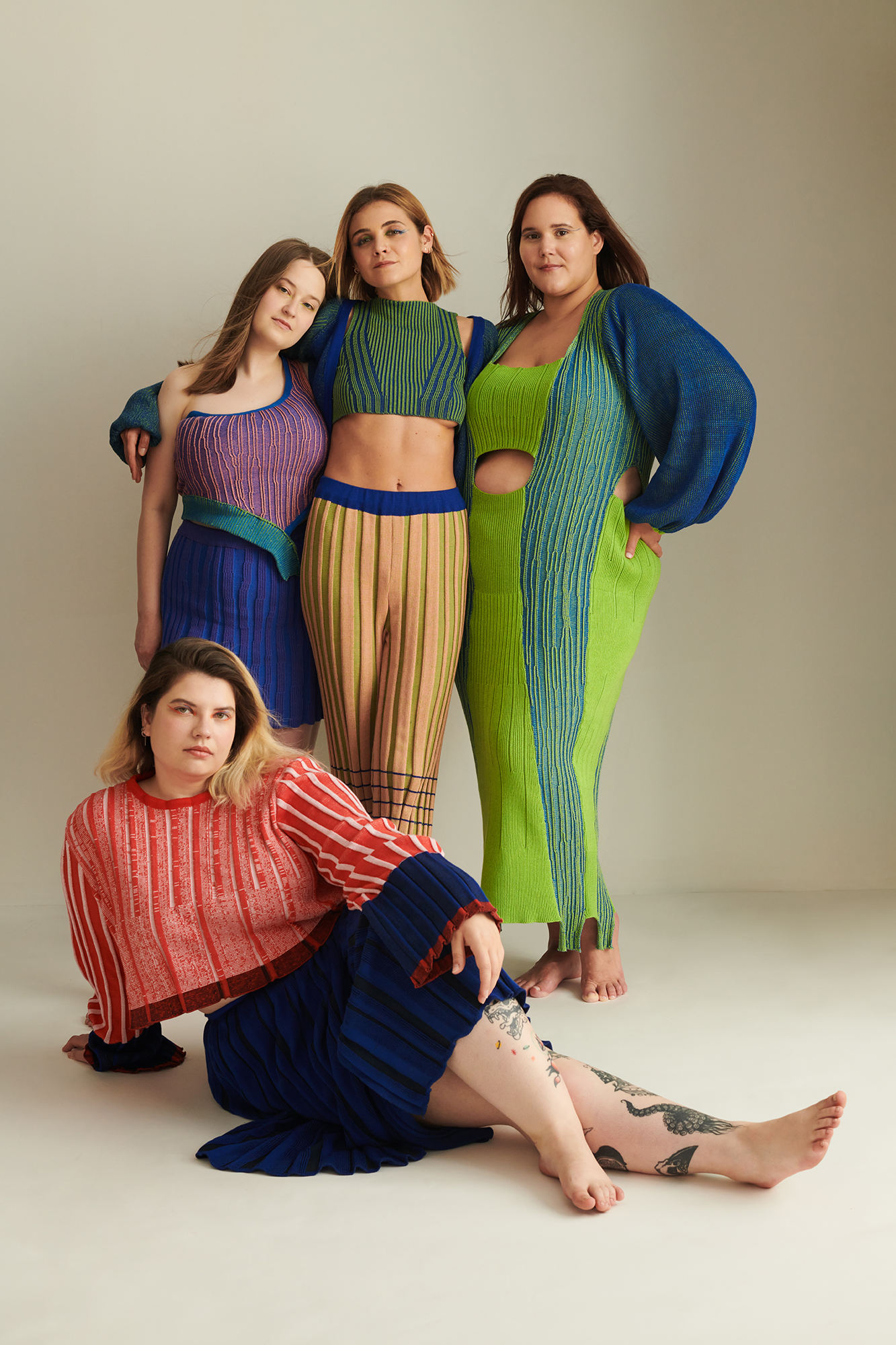
// /
Lili Mészáros’s project was created at the Fashion and Textile Design MA programme of the Moholy-Nagy University of Art and Design. Her supervisor was Zsuzsanna Szabó G. and her consultant was Dóra Tomcsányi.
